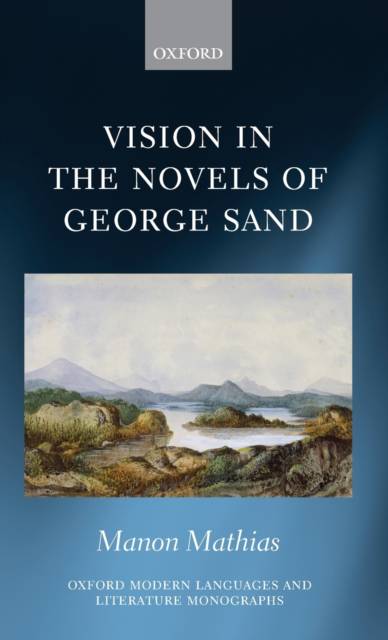
En raison d'une grêve chez bpost, votre commande pourrait être retardée. Vous avez besoin d’un livre rapidement ? Nos magasins vous accueillent à bras ouverts !
- Retrait gratuit dans votre magasin Club
- 7.000.000 titres dans notre catalogue
- Payer en toute sécurité
- Toujours un magasin près de chez vous
En raison de la grêve chez bpost, votre commande pourrait être retardée. Vous avez besoin d’un livre rapidement ? Nos magasins vous accueillent à bras ouverts !
- Retrait gratuit dans votre magasin Club
- 7.000.0000 titres dans notre catalogue
- Payer en toute sécurité
- Toujours un magasin près de chez vous
Description
The first study of George Sand and vision, this book considers the pull between the visual and the visionary in nineteenth-century France through an examination of Sand's novels. With an extensive corpus ranging from Sand's early texts through to her later, less familiar works, it repositions Sand's oeuvre alongside that of the major realist authors and demonstrates her distinctive understanding of the novel as a combination of the concrete and the abstract. By studying Sand's engagement with visual models associated with realism--the mirror, the model of painting, and the scientific gaze--this book proposes a more sustained dialogue between Sand's work and realism than has hitherto been acknowledged, but argues that Sand radically reworks these models to depict a dynamic, mysterious and ever-changing world. Whereas Sand has been read as an author bypassing reality in favour of the ideal, this study shows that she is committed to physical observation, but that she consistently ties this process with the conceptual and the visionary. The book breaks new ground in particular by examining Sand's literary engagement with the visual arts, and it also offers the first sustained consideration of Sand as a scientific writer. By examining Sand's œuvre from the perspective of vision, this study not only reassesses Sand's writing practice, but also rethinks the relations between the visual and the novel in this period. More specifically, it argues that Sand's work challenges our means of theorizing these relations. In her rejection of binaries and her syncretic understanding of vision, Sand breaks conventional categories and writes novels that are at once realist, visionary, mystical and scientific.
Spécifications
Parties prenantes
- Auteur(s) :
- Editeur:
Contenu
- Nombre de pages :
- 180
- Langue:
- Anglais
- Collection :
Caractéristiques
- EAN:
- 9780198735397
- Date de parution :
- 17-02-16
- Format:
- Livre relié
- Format numérique:
- Genaaid
- Dimensions :
- 140 mm x 218 mm
- Poids :
- 362 g

Les avis
Nous publions uniquement les avis qui respectent les conditions requises. Consultez nos conditions pour les avis.






